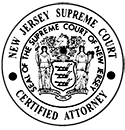5.40L NEGLIGENCE
The manufacturer of a product is under a duty to exercise reasonable care in the design of a product. The law imposes that duty in order to protect those who may be reasonably expected to be in the foreseeable area of the use of the product, from unreasonable risk of harm. This duty exists while the product is being used for the purpose for which it was intended. The duty of exercising reasonable care in the design of the product is also applicable where the use made of the product is one that the manufacturer should have reasonably foreseen. This duty includes the obligation to exercise reasonable care in the inspection of the product and to locate visible or hidden defects in the product. This duty to exercise reasonable care extends to anyone who may reasonably be expected to be in the vicinity of the product’s probable use and to be endangered in the event that the product is defective.
In order for the defendant to be found liable, the plaintiff must prove each of the following elements by a preponderance of the credible evidence.
- That defendant was negligent in designing/manufacturing the product; and
- that the defect existed at the time the article left the control of the manufacturer and did not undergo substantial change; and
- that plaintiff was a foreseeable user or consumer, or was within the area exposed to the risk; and
- that the defect was a proximate cause of the accident; and of
- plaintiff’s injuries or damages.
Negligence is conduct by the defendant which deviates from the standard of care established by law for the protection of others against unreasonable risk of harm. “Conduct” may either be the actions of a party or its failure to act. To put it another way, plaintiff must prove that defendant breached a duty of exercising reasonable care owed to plaintiff by defendant’s actions or failure to act.
Plaintiff must also prove that the conduct of the defendant is a proximate cause of his/her injuries.
Plaintiff also must prove his/her injuries or damage to his/her property.
Optional Charge
- Standards and Customs of the Industry
You may consider evidence relative to standards or customs in the industry in determining whether or not the defendant(s) breached any duty which it owed to the plaintiff.If you find that the defendant did not comply with a standard of safety policy or practice you may find that the defendant breached its duty to the plaintiff. However, the general custom of the industry, although evidential as to what is a reasonable standard in such industries, does not conclusively establish the care the defendant is required to exercise in the performance of its operations, namely, the manufacture, assembly, etc., of this particular product. Compliance with an industry standard is not necessarily conclusive as to the issue of duty or negligence and does not itself excuse the defendant from liability merely because there has been compliance with an industry standard. The defendant must still exercise reasonable care under all of the circumstances. If you find that the prevailing practices in the industry do not comply with that standard of reasonable care, the defendant may be found to have breached that duty, notwithstanding compliance with such industry standard or custom.
- Duty to Inspect
A manufacturer, processor, supplier, etc., is also under a duty to make reasonable inspection and tests of his/her products for the purpose of locating obvious or hidden but discoverable defects in his/her product.This duty calls for the exercise of reasonable care in applying reasonable tests to detect such discoverable deficiencies in the article or product. You may be assisted in this inquiry through whatever expert opinion is available to you in the case, as to the reasonableness and sufficiency of making inspections and tests in order to locate discoverable defects.
To determine the reasonableness of an inspection or test, you must weigh the difficulties of effective discovery of the deficiency, against the dangers inherent in the goods manufactured (processed, assembled, etc.). The greater the inherent danger lurking in such goods, the more careful and exact the inspection or testing must be in order to be termed reasonable.
There is no duty to employ extraordinary methods of inspection or testing to discover defects. To determine the extent of the testing that is required, you may weigh and compare what a reasonably prudent manufacturer would think necessary under the circumstances to discover a defect, the extent of the inherent dangers and the difficulties of an effective discovery. The question is what a reasonable manufacturer would or would not have done under the given circumstances.
In determining whether the defendant made reasonable inspections and tests, you may also consider any potential danger to a user or consumer that the inspections are to guard against; what, if any, inspections/tests this defendant made; and the manner and adequacy of such tests/inspections. You may also consider from all of the evidence presented what inspections/testing, if any, could have been made; the feasibility and difficulty in making such additional inspections/tests and whether such additional tests/inspections would likely have disclosed the defect claimed here.
- Negligent Duty to Warn
A manufacturer has a duty to warn buyers or users of hidden dangers or concealed limitations of its product where the use of its product is dangerous to a user who is ignorant of such hidden dangers or concealed limitations and where the manufacturer has no reason to believe that the user will recognize the dangers or limitations. This duty to warn applies even if the product is perfectly inspected, designed or manufactured.A manufacturer breaches its duty to warn if the warning it does give is not adequate. Plaintiff has the burden of proving that the warning is inadequate. In order for you to find that the warning is not adequate, the warning must be in a form that could not reasonably be expected to catch the attention of a reasonable user under the circumstances, or the content of the warning is not understandable to a reasonable user and does not convey a fair indication of the nature and extent of the hidden dangers or limitations to the mind of a reasonable user.
Although a manufacturer may reasonably assume that the warning that it gives with its product will be read and heeded, the mere presence of directions for use of the product, as opposed to a warning as to the hidden dangers or limitations of the product, is not an adequate warning.



